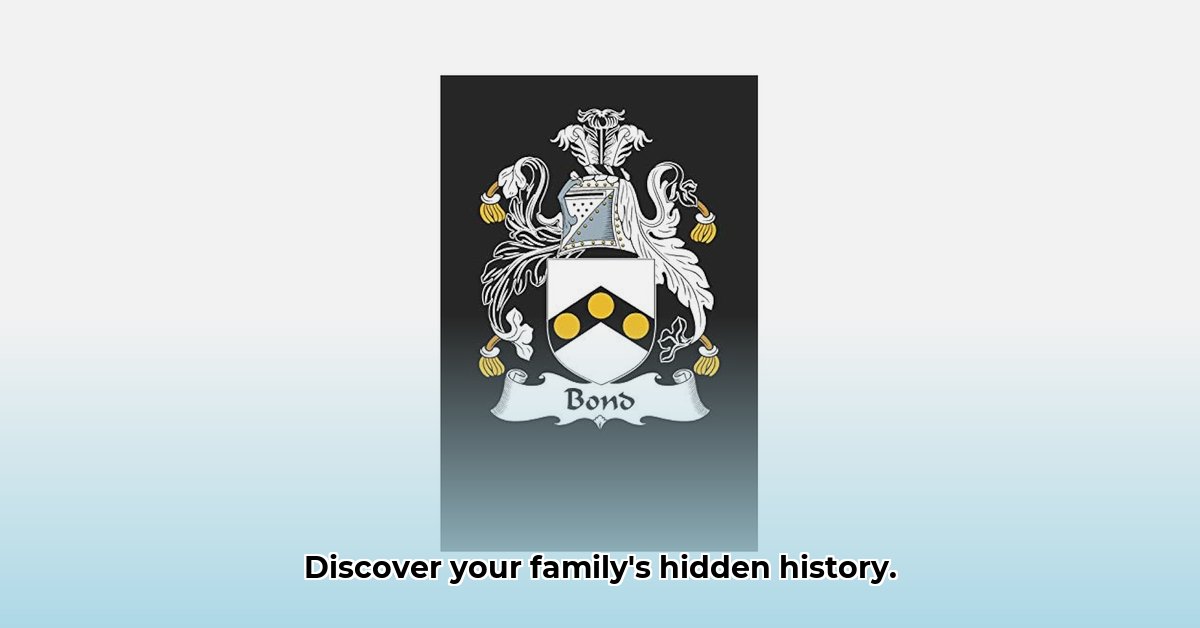
Bond Family Crest: Unraveling a Global Legacy
The name Bond, familiar from literature and film, possesses a rich history spanning centuries and continents. Its roots trace back to Old English, possibly derived from "bonda" or "bund," terms signifying a farmer or tenant. Imagine a time long past, where this designation reflected a person's societal role. This unassuming origin marked the beginning of a global family lineage.
The Norman Conquest of 1066 profoundly impacted England, reshaping land ownership and social structures. The Bond family, like many others, adapted and thrived amidst this upheaval, leaving their mark on the evolving nation. Records like the Domesday Book and Pipe Rolls offer glimpses into their lives, revealing varied fortunes – some Bonds prospered, while others faced hardship. Uncovering their specific stories demands dedicated genealogical research. Did your ancestors experience the prosperity or the struggles of this era?
The Bond Family Crest: A Visual Story
The Bond family crest, while its precise origins are still under investigation, adds another layer to the narrative. It's a visual record, embodying the family's history and values. This unique emblem, likely specific to a particular Bond branch, stands as a testament to their identity. What stories does its design reveal?
Researchers diligently piece together the crest's meaning. Was it officially granted by a monarch? Did its design evolve over generations, reflecting changing circumstances or alliances? Each element—lions, a specific shield design, etc.—holds potential clues to the past. It’s a challenging puzzle requiring expertise and patience, but one promising insights into the family's history and character.
A Global Diaspora: Tracing the Bond Family Through Time
The Bond family story extends far beyond England. Migration, both voluntary and forced, carried the name across oceans. Over centuries, Bonds settled in diverse cultures and environments, demonstrating adaptability and resilience. Imagine the family as a river, its currents flowing across the globe, establishing branches in North America, Australia, and countless other locations. Each migration adds a chapter to the family's saga. How did your Bond ancestors contribute to this global tapestry?
Uncover Your Ancestral Legacy: A Practical Guide
Unveiling your family's past is a rewarding journey. Here's how to begin:
Gather Existing Information: Start with known names, dates, and places. Even small details can be vital clues.
Utilize Genealogical Resources: Online databases, library archives, and genealogical societies are invaluable resources.
Explore Historical Records: Census data, parish records, and land ownership documents offer glimpses into your ancestors' lives and social standing.
Connect with Fellow Bonds: Networking with others sharing the surname can accelerate research and uncover new leads.
Consider DNA Testing (Optional): DNA testing can connect you to distant relatives and pinpoint geographic origins.
How to Trace My Bond Family History in Ireland
The Bond surname, originating from the Old English "bonda," has a rich and varied history. Tracing your Bond family history requires methodical research across multiple sources. Irish records offer crucial clues to your ancestry, requiring careful examination of historical documents. Online databases and genealogical societies provide tools and support for effective research. Combining genealogical research with the study of heraldry offers a more complete understanding of your family's past.
Unraveling the Bond Lineage: From England to Ireland
The surname's journey to Ireland involved migration driven by economic prospects, political upheaval, and personal circumstances. Tracing your Irish Bond ancestors requires understanding these broader historical movements. Did economic hardship or opportunity propel your ancestors to Ireland?
Delving into Irish Records: A Path to Your Past
To trace your Bond family history in Ireland, focus your research. Knowing your ancestors' county significantly narrows the search. Utilize:
- Civil Registration Records (1864 onward): Birth, marriage, and death certificates provide invaluable links between generations.
- Church Records (pre-1864): Parish records contain christenings, marriages, and burials.
- Census Records: Offer snapshots of the population, listing individuals, occupations, and family relationships.
- Land Records: Show where ancestors lived and their socio-economic status.
- Online Resources: Databases like Ancestry.com and FamilySearch.org contain indexed Irish records.
Beyond Records: Connecting the Dots
Genealogical research is like assembling a puzzle. Connecting the pieces requires careful analysis of names, locations, and occupations. Explore heraldry for a richer understanding of your family's past. The journey of discovery is as enriching as the destination itself.